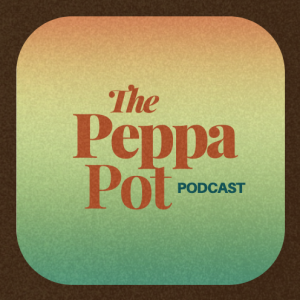
Sunday Jun 25, 2023
Coolie
We are the descendants of Indian indentured laborers, brought to the Caribbean after the abolition of slavery. Our roots run deep, interwoven with Indian, African, European, and Caribbean influences, and forged through centuries of migration, colonialism, survival, and resilience. Yet, our story remains largely untold. As Brenda Beck puts it in a 1992 South Asian Diaspora article, media narratives of our people are often based on derogatory stereotypes that fail to capture the richness and complexity of our heritage.
So, what does it truly mean to be Indo-Caribbean?
For us, it means embracing a history of displacement and triumph, speaking English while cherishing our connection to the Indian language and dialects. It means losing ourselves in Bollywood movies, from the beloved "Kuch Kuch Hota Hai" to the soul-stirring "Dil To Pagal Hai" and "Kal Ho Naa Ho." It means dancing to Hindi film songs at birthdays, weddings, and basement jams, despite not knowing the meaning behind all the lyrics.
It means cultivating a love for cricket, music, and dance, drawing from our Caribbean surroundings while honoring the cultural traditions of our ancestors. Our food, a fusion of Indian and Caribbean flavors, showcases the intricate blend of spices and ingredients, enriched with local delights like plantain, cassava and, of course, Guyana Shrimp.
Join us for Episode 7 of the Pepper Pot Podcast as we explore the challenges we encountered in forming our identities as descendents of Indian Indentured Workers. Together, we reclaim our narrative, honour the generations before us, and inspire those to come.
Follow and connect with The Peppa Pot Podcast online, we'd love to hear from you!
Credits
Beats and Music by Noyz
Research by Ryan N. Ramdin
Creative Direction by Sara-Sati Ramprashad
Produced by WESTINDIECO
Resources
Bahadur, G. “Coolie Woman: the Odyssey of Indenture” (The University of Chicago Press: 2014).
Barratt, S. A. & Ranjitsingh, A. N. “Dougla in the Twenty-First Century: Adding to the Mix,” (University Press of Mississippi: 2021).
Breman, J. & Daniel, E.V. (1992) “Conclusion: The Making of a coolie,” Journal of Peasant Studies, 19(3-4).
Hearn, L. (1886) “A Study of Half-Breed Races in the West Indies,” Cosmopolitan; New York.
Jagessar, R. “Kiss and Breathe: Only the Broken Ones Will Rise” (Rohit Jagessar: 2022).
Kaup, K. (1995) “West Indian Canadian Writing: Crossing the Border from Exile to Immigration,” Essays on Canadian Writing; Toronto, Issue 57.
Mahase, R. Roopnarine, L. & Hassankhan, M.S. (eds.) (2016) “Social & Cultural Dimensions of Indian Indentured Labour and its Diaspora: Past and Present,” (Routledge, London).
Sengupta, S. & Toy, V. S. (7 Oct. 1998) “Two Groups of East Indians Are Brought Closer, for Now,” New York Times.
Siddiqui, H. (1992 Oct. 15) “Children of the Raj,” Toronto Star.
New York Times, (1998 Sept. 22) “Racial Motive Is Seen in Beating of Indian- American Man in Queens,” New York Times.
Comments (0)
To leave or reply to comments, please download free Podbean or
No Comments
To leave or reply to comments,
please download free Podbean App.